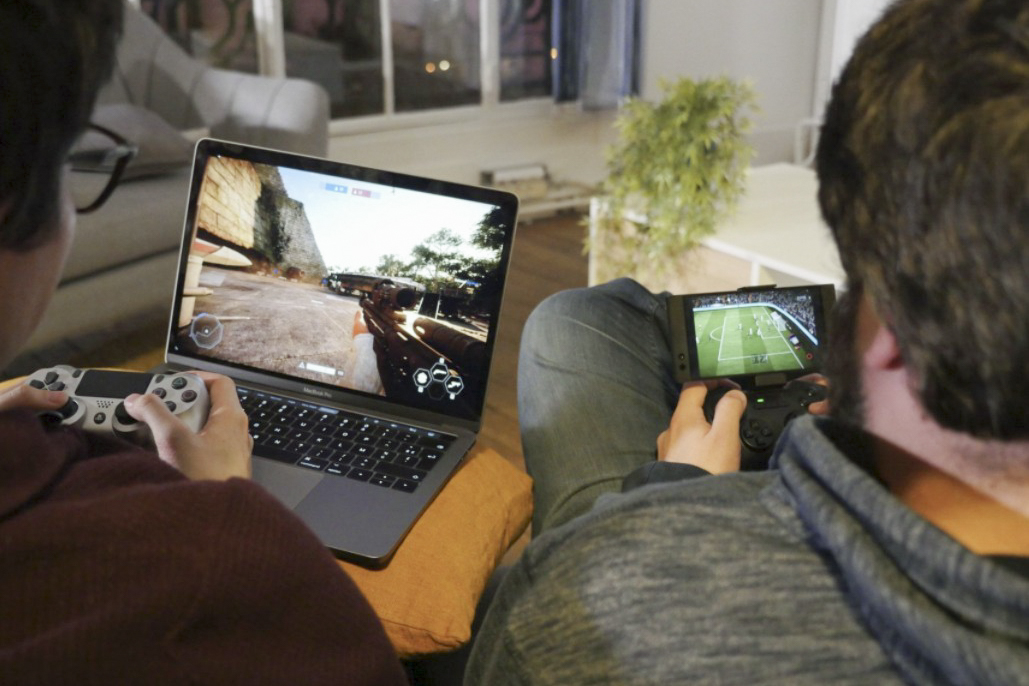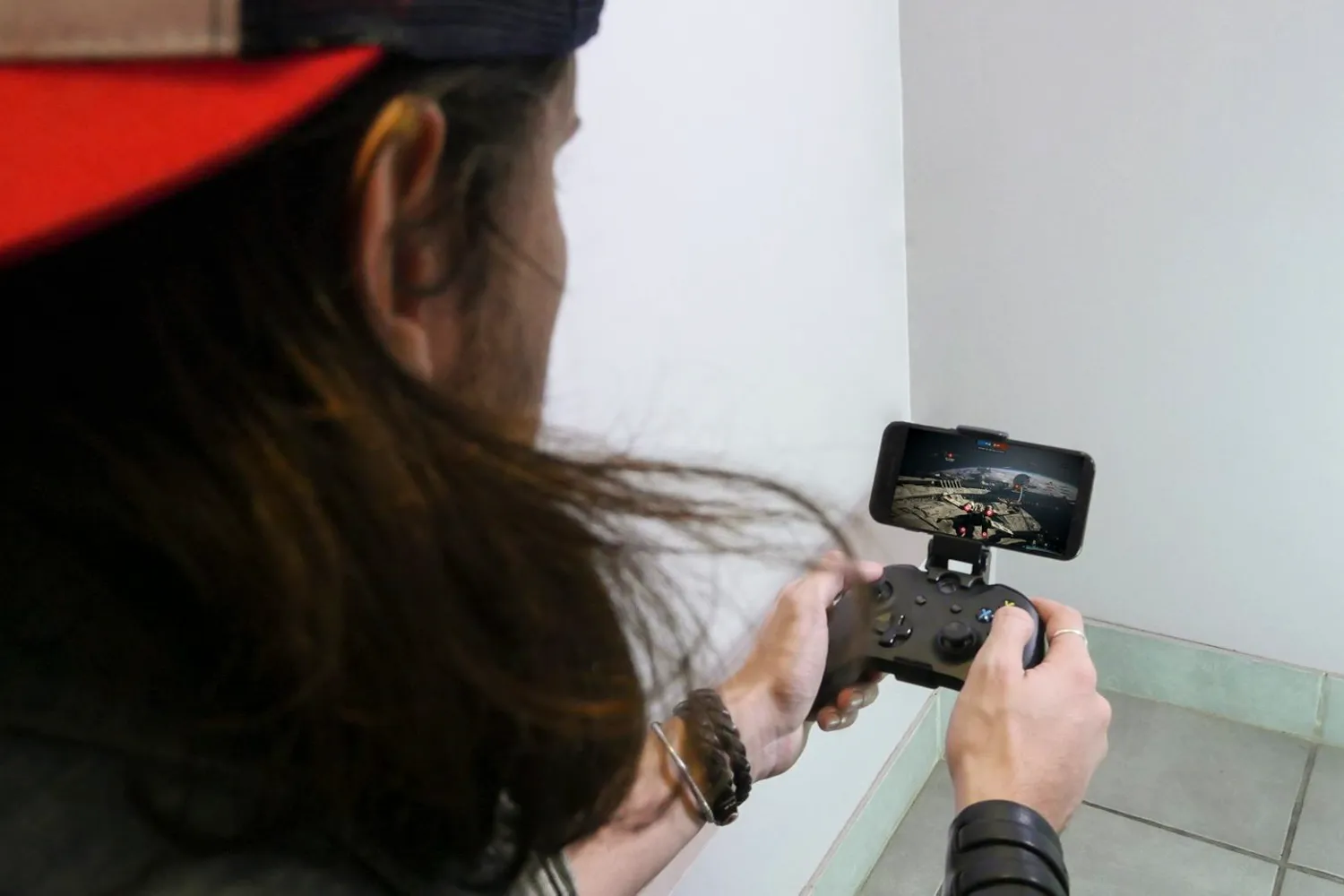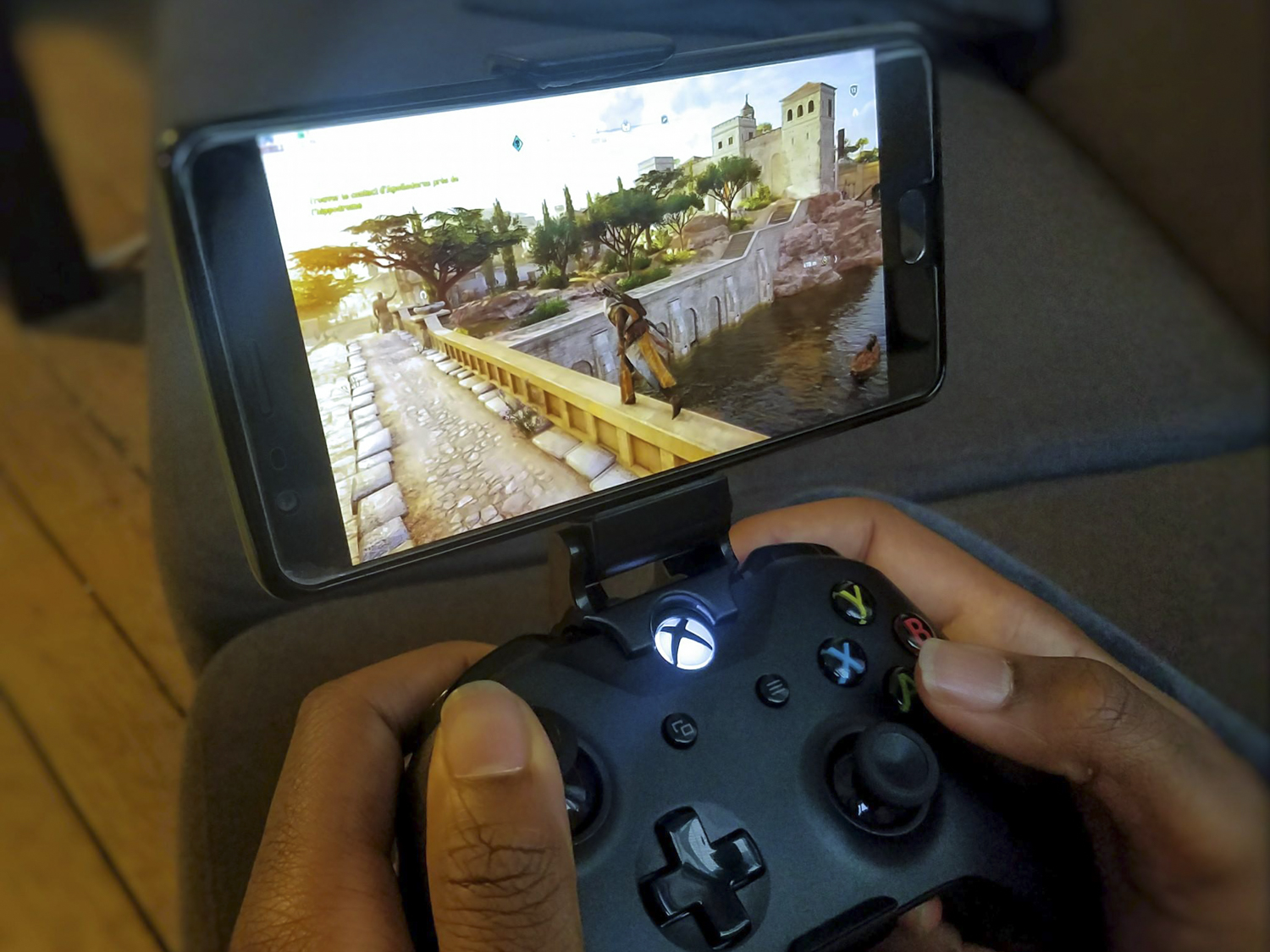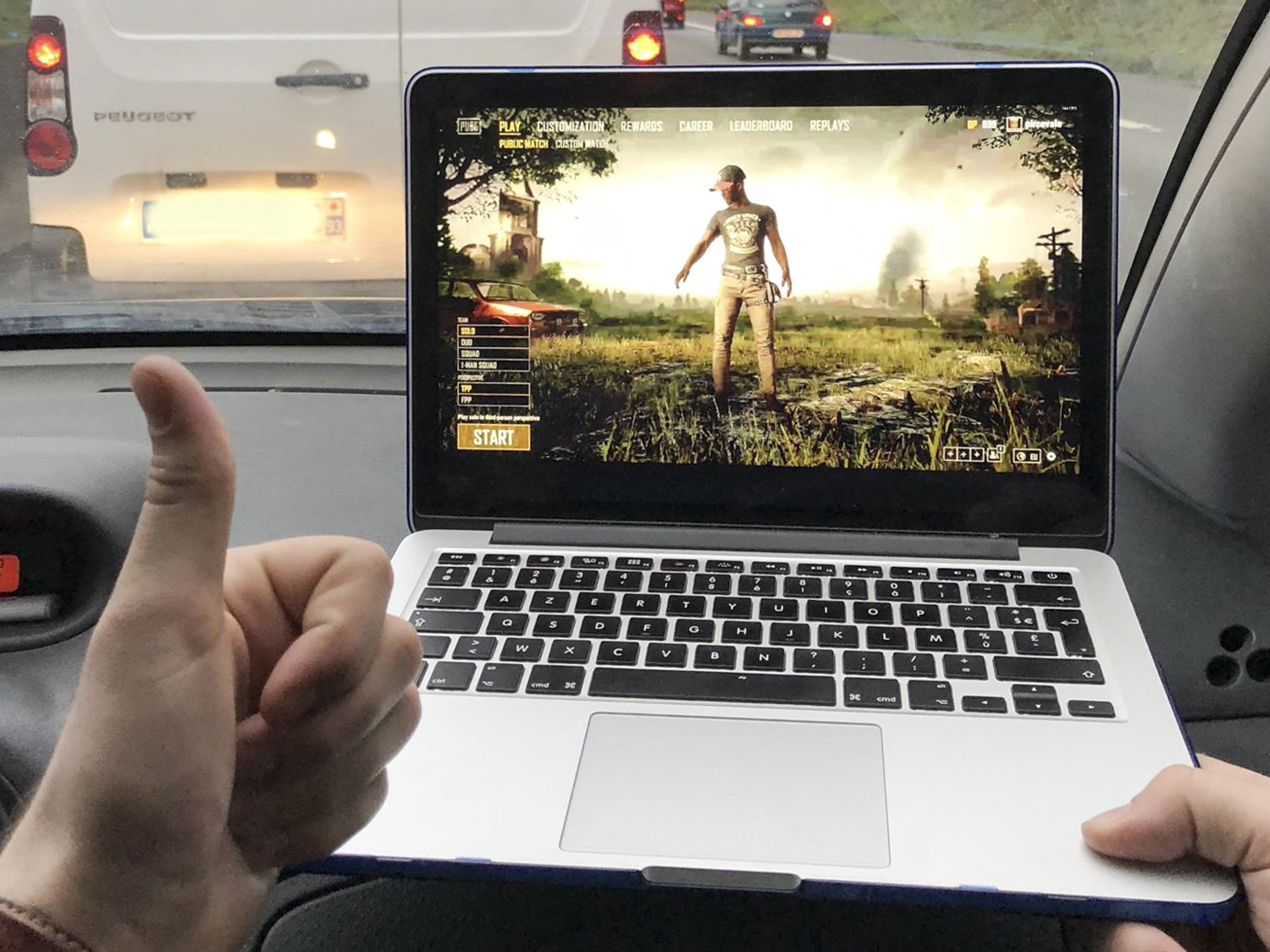There was OnLive, the independent cloud game-streaming service which popularized the idea, but could not draw in enough players to stay afloat. Sony’s PlayStation Now, lets PlayStation 4 owners stream a limited library of games, but adds enough lag to prevent it from becoming a preferable alternative to playing native PS4 games. Nvidia’s GeForce Now, currently in beta, works quite well based on the time we’ve spent with it, but the service charges based on use time.
Rather than create a service that delivers content, Blade wants to replace your console or gaming PC entirely.
Despite the technology’s failure-pocked history, French start-up Blade thinks it has what it takes to succeed in the space. Its cloud gaming service, Shadow, aims to bring the experience of playing a powerful gaming PC to any device, be it a laptop, tablet, phone, or smart TV. The company has raised more than £20M from investors since it opened shop in 2015, and has signed technical and marketing partnerships with Intel, Microsoft, Razer, AMD — and even its competitor, Nvidia.
Blade’s goal for Shadow is substantially more ambitious than any of its peers. Rather than creating a service that delivers content, it wants to replace your console or gaming PC entirely. Booting up Shadow serves you a virtual Windows machine, which you can use play to play your games on Steam, Origin, Humble, and Itch.io. The games purchased by yours, and yours to keep, from the standard storefronts. Your Shadow machine is just like any computer you’d own, except you can access it on any device for which Blade has created a client, including Macs, PCs, iOS, and Android devices. Shadow also works directly on Sony smart TVs through an Android client, and a client for Tizen-based Samsung smart TVs is on the way.
The goal of all this is bold, yet simple. Blade wants to make the home PC obsolete.
Casting a Shadow
That means Shadow is not a cloud gaming service, but a cloud computing service – end stop. According to Blade president Asher Kagan, Shadow’s gaming focus allows it to tap into a community hungry for new tech, and doubles as a proof of concept. Playing games like The Witcher 3, Destiny 2, or Rise of the Tomb Raider, is among the most taxing PC users ask of their hardware. If Shadow can do that well enough to be an alternative to owning a PC, Kagan believes players will embrace the idea.
Shadow offers a different set of features than cloud gaming services of the past, so it makes sense that they do things differently. Many, if not most, services power their virtual machines by amassing networks of computers to create a massively powerful server to power virtual clients. With GeForce Now, players purchase play-time using specifications that mimic a GTX 1060 or 1080, but you aren’t buying access to a discrete machine — just access to different levels of resources. Shadow devotes dedicated components to each user.
According to Blade, the Shadow service offers a virtual machine with the equivalent of an eight-thread Intel Xeon processor, a “high-end” Nvidia GPU, 12 GB of RAM, and 256 GB of solid state storage. With these specs, Kagan claimed Shadow can deliver games running in 4K resolution at 60Hz, and up to 144Hz in full HD, which would theoretically make it viable for competitive esports play. However, Blade doesn’t keep a computer with each customer’s name on it. Shadow simply partitions users so they never share processing power. That should mean, in theory, that your Shadow PC’s performance won’t change based on the number of users online at once.
In theory, your Shadow PC’s performance won’t change based on the number of users online at once.
Blade also plans to minimize latency by making sure everyone has access to local servers. It is so committed to this, in fact, that when Shadow initially launches on February 15, it will only be available in California. Blade will roll out the service nationwide as it builds new server hubs. While the plans have not been finalized, Kagan said the company plans to build four to five server hubs in the U.S. by the time the launch wraps in summer 2018.
The price for the privilege isn’t cheap, but may be less than you’d expect. Shadow costs $35 per month with an annual contract, $40 per month with a three-month commitment, or $50 month-to-month. It sounds expensive relative to other subscriptions you might purchase for gaming but, as Kagan noted, this is a cost you’re paying instead of buying a 4K-ready gaming PC. Blade estimates that a physical PC on par with its service would cost consumers $2,000, plus the subsequent upgrades.
You want a box? We’ll give you a box
Shadow is a service first and foremost, and you shouldn’t need to invest in hardware at all, save for upgrading your home network. That notion doesn’t exactly line up with our current understanding of technology, especially when it comes to gaming PCs. Most of us expecting to have something to point to as “the game machine.”
For those players — and people who don’t have a compatible device that easily hooks to a monitor or TV — Shadow does have a piece of hardware, appropriately called “the Shadow box.” The box, a very small PC in a sleek case, serves as a junction between the Shadow service and any TV or monitor.

Blade declined to reveal all the hardware in the box, but said it uses AMD APU. The device also features an Ethernet port, two USB 2.0 ports, two USB 3.0 ports, two display ports, audio in and audio out. The device comes with a Display-to-HDMI adapter, so it will be compatible with most TVs out of the box. There is a panel on the front that lights up, because Shadow is a form of PC gaming — and all PC gaming products must light up.
Like the service itself, The Shadow Box seems expensive, but also could be a bargain. It cost $140, and will be available to rent for $10 per month. Keep in mind that this is not a game console or an all-in-one PC — controllers, keyboards, and mice are not included.
So, does it work?
Blade is promising a lot with Shadow, but we’ve heard similar ideas before. The proof is in the experience.
It worked… most of the time.
At a brief demo, held in New York, we played Rise of The Tomb Raider on an ASUS 501V laptop, then switched over to a Macbook Pro, then a Samsung Galaxy Tab S3 tablet, and finished up on a Samsung Galaxy S7 smartphone connected to a third-party smartphone gamepad peripheral. Switching between each platform took a few moments, and our gameplay session picked up exactly where we left off. The game looked great and controlled with no noticeable input lag across all the devices. It worked…most of the time.
At a few points across the various devices, the game experienced serious hitching. Presumably, these issues were the product of an unstable connection. Kagan said the issues stemmed from the fact that we were playing the game on Blade’s California-based server.
We have no way to know whether that’s accurate, but it was clear that the problems were not tied to the individual devices, or swapping among them. Given the pitch, it was enough for us to leave the demo with an open mind.
Cloud gaming looms
Based on its uniform performance across many devices, we bought the notion that the Shadow box needs only the most basic PC components to support Shadow. We don’t know that, though, since we could only use it in a controlled test environment set up by the company itself.
Aside from the potential technical hiccups, there are obstacles to using Shadow that fall outside of Blade’s control. If your internet service provider implements data caps or throttling on your home or mobile devices, that can impact your ability to use Shadow for long stretches. Similarly, in the post-net neutrality era, services like Shadow seem a ripe opportunity for ISPs to impose extra fees or constraints that would make using the service costly.
Still, in the cloud gaming space, creating a product that raises questions is better than most have achieved. For many, especially those not so enamored with expensive gaming PCs, the idea of a personal computing experience untethered from a personal computer is a dream come true. By starting small and focusing on technology, Blade has a chance to bring Shadow, and cloud gaming, back into the conversation.
Blade will start taking a limited number of pre-orders for the Shadow service in California on Thursday, January 4. The launch is planned for California on February 15. To find out more about how to sign up, check out the Shadow website.
Editors' Recommendations
- OneDrive is ruining my PC gaming setup
- HyperX just made your next favorite gaming keyboard
- AI is coming for your PC games, but you should be excited, not worried
- Alienware finally improved PC gaming controllers, but this one’s still not perfect
- Xbox Game Pass’ cloud service is coming to the Meta Quest 2 and Pro






